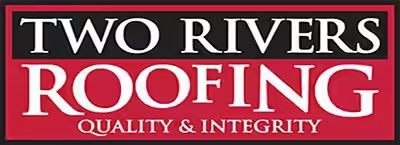Roof Vulnerabilities and Protection Strategies
The roof serves as the primary shield protecting a structure from external elements. However, its expansive surface area makes it highly susceptible to fire hazards, particularly from embers. Vulnerabilities are often present at roof-wall intersections, edges, skylights, and vents, where debris accumulation can lead to ignition. Complex roof designs—such as those featuring dormers or split-level structures—introduce additional risks that require specialized attention. In particular, roof edges and intersections are prime areas of concern and should be prioritized in fire mitigation strategies.

Effective Roof Protection Methods
Given the variety of roof designs, it is essential to tailor protection measures according to specific roof components. Below are key areas of vulnerability and corresponding recommendations for improving fire resistance:
Example


Vulnerabilities
Roof edges and intersections are prone to ember exposure due to debris accumulation in gutters or gaps between roofing materials and sheathing.
Valleys, formed by two different roof slopes, can collect leaves and debris, particularly if they are open or improperly sealed.
Recommendations
Keep gutters clean of debris (see gutters section for more information). Repair damaged areas along roof intersections and install metal flashing in vulnerable areas (e.g. roof fascia).
The fire resistance of valleys can be improved by installing metal flashing (incorporating a mineral-surfaced cap sheet into the assembly). Metal flashing can be avoided with Class A asphalt composition shingles by interweaving the shingles (closed valley).


Dormers create roof-to-wall intersections and can cause accumulation of leaves and debris in these areas.
An underlayment of fire-rated gypsum can increase the resistance to flame penetration (type X is a common gypsum board for this application). Protect intersections with metal flashing. Careful installation is crucial to avoid water damage.
Understanding Fire Ratings for Roofs
Fire ratings for roofing materials are based on standardized tests that assess three key fire-related characteristics: 1) resistance to attic fire spread, 2) resistance to flame spread across the roof surface, and 3) the production of burning embers.
Class A roofs offer the highest protection against fire and are the preferred choice in wildfire-prone areas. Materials such as fiberglass asphalt shingles, metal roofs (e.g., steel or copper), and ceramic tiles fall under this category.
Class B materials, including fire-retardant treated wood shakes and shingles, provide a moderate level of protection.
Class C roofs, such as those made from recycled plastic, rubber products, and aluminum coverings, offer minimal protection but may meet Class A standards with additional underlayment.
Certain roofing materials require supplementary components to achieve fire-resistant ratings, referred to as “by-assembly” ratings. For instance, materials like fire-retardant treated wood shakes or aluminum roofing can achieve a higher fire resistance when combined with specific underlayment layers. Testing protocols are outlined in ASTM Standard E-108, UL Standard 790, and NFPA Standard 276.

California Fire-Resistant Roofing Standards

As per Chapter 7A of the California Building Code, roofing assemblies must be designed to prevent the intrusion of flames and embers. Specific guidelines include:
Roof assemblies must comply with manufacturer installation instructions and include fire-resistant materials where there is space between the roof covering and decking.
Flashing in valleys must be made of galvanized, corrosion-resistant metal, and be coupled with a mineral-surfaced nonperforated cap sheet.
Local regulations may vary, and it is advisable to consult with local authorities for additional requirements. Products and systems compliant with Chapter 7A can be found in the WUI Product Handbook, which lists materials tested to meet ignition-resistant and non-combustible standards.
By implementing these comprehensive fire mitigation strategies and adhering to local regulations, homeowners can significantly reduce the risk of roof ignitions in wildfire-prone regions.
